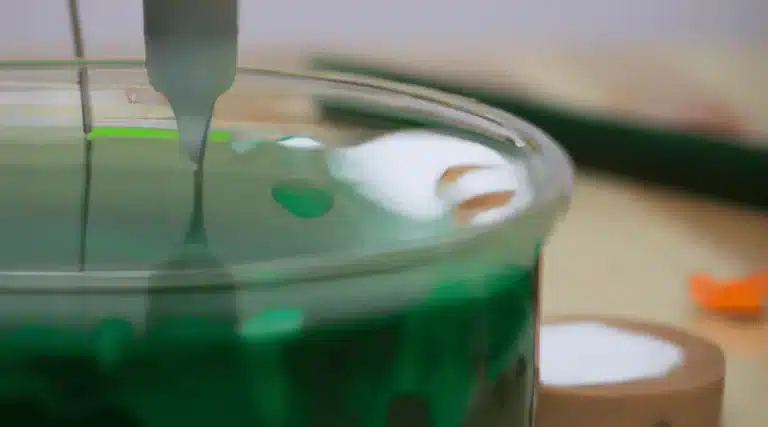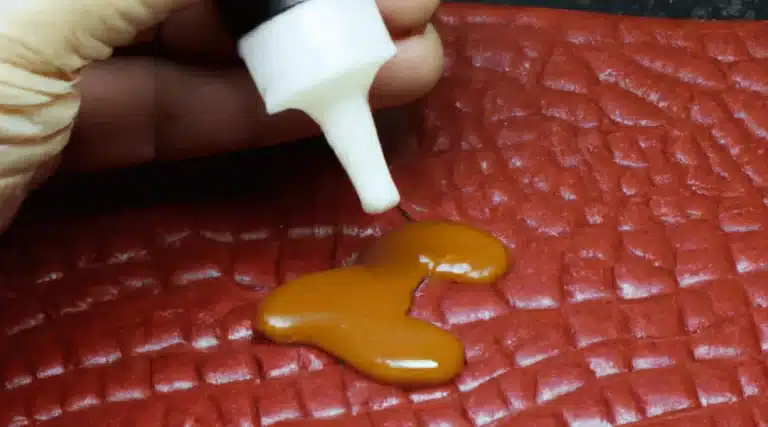Carpet adhesive is an essential component in the installation of carpets. It is a substance that helps to bond the carpet to the floor, creating a stable and secure surface. As the old saying goes, ‘a chain is only as strong as its weakest link,’ and the same holds true for carpets. The quality of the adhesive used can make all the difference in how well the carpet stays in place and how long it lasts.
Carpet adhesive has been used for decades, and over time, it has evolved to become more effective and efficient. Today, there are various types of carpet adhesives available in the market, each with its unique properties and purposes.
In this article, we will explore what carpet adhesive is, its uses, pros, and cons, and how to choose the right adhesive for your carpet installation needs. Whether you are a professional installer or a DIY enthusiast, understanding carpet adhesive is crucial to achieving a successful installation that will stand the test of time.
What is Carpet Adhesive?
The substance commonly referred to as carpet adhesive is a type of bonding agent utilized in the installation of floor coverings. It is a glue-like substance that is applied to the underside of the carpeting and then pressed firmly onto the floor surface.
The benefits of using carpet adhesive include its ability to secure the carpeting in place, prevent slipping or buckling, and provide a uniform appearance to the flooring. Popular brands of carpet adhesive include 3M, Roberts, and Shaw.
The uses of carpet adhesive are varied and can include both residential and commercial applications, such as in homes, offices, and retail spaces. This bonding agent can be used with different types of carpeting materials, including natural fibers and synthetic blends.
As we explore the uses of carpet adhesive, we will see how it is a versatile and effective solution for securing floor coverings in place.
Uses of Carpet Adhesive
Installing a floor covering requires a bonding agent to secure the material firmly in place, ensuring that it stays put over time. Carpet adhesive is a type of bonding agent that is commonly used in flooring installations. It is particularly useful for installations that require a strong, long-lasting bond.
Carpet adhesive can be used on a variety of surfaces, including concrete, wood, and tile. In addition to its use in commercial settings, carpet adhesive is also commonly used in residential settings to secure carpeting to subfloors.
Carpet adhesive is available in a variety of formulations, including water-based and solvent-based. Some installation techniques require the use of specific types of adhesive, so it is important to choose the right type of adhesive for your specific installation needs.
One of the biggest concerns surrounding the use of carpet adhesive is its environmental impact. Solvent-based adhesives, in particular, can release harmful volatile organic compounds (VOCs) into the air, which can be harmful to human health and the environment. However, there are now low-VOC and even no-VOC carpet adhesives available that are much safer to use.
The use of carpet adhesive has many benefits, including its ability to create a strong, long-lasting bond that can withstand heavy foot traffic and other wear and tear. Additionally, carpet adhesive can help to reduce noise and improve insulation in a room.
Overall, the use of carpet adhesive is a popular choice for many flooring installations, and with the availability of low-VOC and no-VOC options, it is becoming an increasingly environmentally friendly option.
Pros of Using Carpet Adhesive
Bonding agents are essential for securing floor coverings in place and carpet adhesive is a popular choice due to its ability to create a long-lasting, strong bond that can withstand heavy foot traffic and provide noise reduction and insulation benefits.
The advantages of using carpet adhesive are many, including its ability to provide a seamless and flat surface for the carpet, resulting in a smooth and professional-looking finish.
Additionally, it can help to reduce the amount of noise that travels through floors, making it ideal for use in multi-level buildings or areas where noise reduction is important.
Furthermore, carpet adhesive can act as a thermal insulator, helping to keep rooms warm in colder weather.
Another benefit of using carpet adhesive is that it can be applied quickly and easily, reducing the amount of time and effort required for installation.
However, there are also some cons of using carpet adhesive that should be considered, such as the potential for VOC emissions and the difficulty of removing the adhesive if the carpet needs to be replaced.
Cons of Using Carpet Adhesive
The use of carpet adhesive may present some drawbacks that are worth considering.
Firstly, the adhesive may be difficult to remove from surfaces, which can lead to damage and additional expenses.
Secondly, some adhesive products may contain harmful chemicals that can pose potential health hazards to those exposed.
Lastly, carpet adhesive may not be reusable, limiting its sustainability and adding to environmental concerns.
These cons highlight the importance of carefully weighing the potential drawbacks of using carpet adhesive before making a decision.
Difficult to Remove
Attempting to separate two surfaces that have been joined with carpet adhesive is akin to trying to unglue a fly from a sticky trap. This is because carpet adhesive is a very strong and stubborn substance that is designed to hold the carpet firmly in place.
One of the biggest cons of using carpet adhesive is that it is very difficult to remove. Most removal techniques involve the use of harsh chemicals or mechanical means, which can be time-consuming, expensive, and damaging to the carpet and the underlying surface. Moreover, even after the adhesive has been removed, it may leave behind a residue that can attract dirt and stains, making it difficult to maintain a clean and hygienic environment.
Therefore, before using carpet adhesive, one must consider the potential difficulties and drawbacks associated with its removal and stain prevention.
Moving on to the next section, it is important to note that carpet adhesive can also pose potential health hazards, especially if the installation is not done correctly or if the adhesive contains harmful chemicals.
Potential Health Hazards
It is important to consider potential health hazards associated with the use of certain types of installation adhesives, as improper installation or exposure to harmful chemicals can pose risks to individuals and the environment.
Carpet adhesive, in particular, can contain toxic chemicals such as volatile organic compounds (VOCs) that may lead to respiratory issues, headaches, and other health concerns when inhaled. Proper ventilation requirements should be followed during installation to minimize exposure to these chemicals.
Additionally, carpet adhesive can be difficult to remove, making it challenging to replace or reuse carpets. This limited reusability can lead to increased waste and environmental impact.
Limited Reusability
While carpet adhesive is an effective solution for securing carpets in place, one of its limitations is its limited reusability. Once the carpet is removed, the adhesive residue on the floor can be difficult to remove, making it a challenge to reuse the same carpet.
This sustainability concern has led to the exploration of alternative options such as carpet tiles that can be easily removed and replaced without leaving adhesive residue. It’s important to consider these options when choosing a carpet adhesive to ensure that the installation process aligns with the long-term sustainability goals of the project.
Moving forward, it’s essential to understand how to choose the right carpet adhesive to ensure that the installation process is efficient, cost-effective, and sustainable.
How to Choose the Right Carpet Adhesive
Selecting the appropriate adhesive for affixing floor coverings necessitates a deliberate and informed decision-making process that involves evaluating a wide range of factors, including the nature of the surface, the type of flooring, and the environmental conditions.
When comparing brands, it is important to consider the adhesive’s strength, durability, and compatibility with the flooring material.
Application techniques also play a critical role in ensuring the adhesive’s effectiveness, with factors such as coverage area, drying time, and clean-up process all impacting the final result.
To ensure optimal performance, it is recommended to follow the manufacturer’s instructions closely and to prepare the surface properly before applying the adhesive.
When working with carpet adhesive, it is important to remember that it can be messy and difficult to remove, making it essential to take the necessary precautions to avoid spills and to protect surrounding surfaces.
With these considerations in mind, choosing the right carpet adhesive can make a significant difference in the longevity and appearance of the flooring, and can ultimately save time and money in the long run.
Tips for Using Carpet Adhesive
To maximize effectiveness and minimize potential mishaps, implementing proper techniques when working with floor coverings and adhesive is crucial.
When using carpet adhesive, it is important to follow the manufacturer’s instructions for proper application.
This includes applying the adhesive evenly and at the correct thickness, ensuring that the surface is clean and dry before application, and allowing adequate drying time before laying the carpet.
Rushing the drying process can result in an uneven surface and potential bond failure.
It is also important to use the appropriate adhesive for the type of carpet being installed and the substrate it will be applied to.
Proper application and drying time can ensure a strong and long-lasting bond between the carpet and substrate.
Conclusion
Carpet adhesive is a type of glue used to attach carpeting to a variety of surfaces, including concrete, wood, and tile. It is commonly used in both residential and commercial settings to create a secure and long-lasting bond between the carpet and the floor.
While carpet adhesive has many benefits, such as providing a smooth and seamless finish, it also has some downsides, such as potentially releasing harmful VOCs into the air. Despite its potential drawbacks, carpet adhesive remains a popular choice due to its many advantages.
These include its ability to create a strong and durable bond, its versatility in adhering to different surfaces, and its affordability compared to other carpet installation methods. Additionally, carpet adhesive is easy to apply and can be used in a variety of different settings, making it a popular choice for DIY enthusiasts.
One interesting statistic to note is that according to a report by Grand View Research, the global market for adhesives is expected to reach $53.5 billion by 2027, driven by increased demand from various industries including construction and automotive. This highlights the growing popularity and importance of adhesives, including those used in carpet installation.
As such, it is important to carefully consider the pros and cons of carpet adhesive before making a decision on which installation method to use. By weighing the benefits and drawbacks of carpet adhesive, individuals can make an informed decision on whether it is the right choice for their specific needs and preferences.




